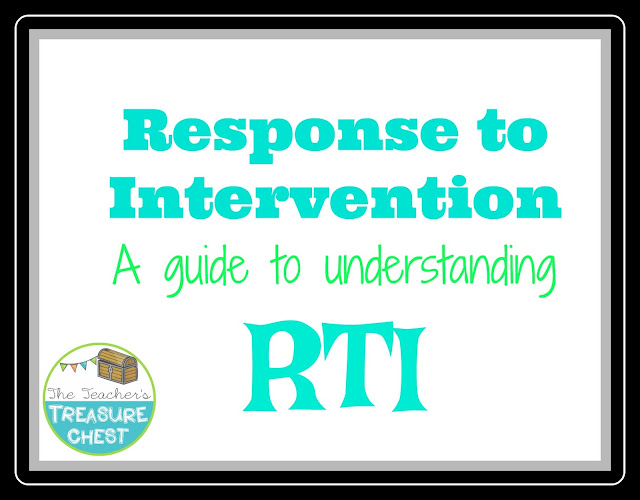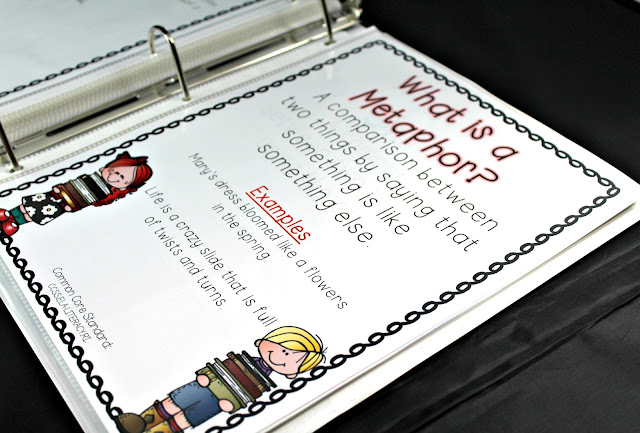As a classroom teacher who has moved all over the country, understanding how each district does RTI can be difficult.However, with a strong understanding of the purpose of Response to Intervention and the goal, Response to Intervention does not have to be difficult. RTI is a process that helps identify students who are experiencing difficulty in the classroom.
Understanding the Levels of Interventions
Response to Intervention or RTI has three levels. I have always been told to look at it like it was a pyramid. The framework for RTI is detailed for each tier, but how you instruct at those levels vary from district to district. I believe that regardless of what "tier" students are on, students need the opportunity to have an intervention time to work out problems.
Tier One Instruction in the RTI Framework
Tier one instruction is the level that all students receive. At this level, teachers should provide high quality instruction and assessment. Teachers are able to screen students to determine their deficiencies. Assessment is key, because it gives the teachers information. This is the level that nearly 80% of students fall in for instruction and intervention. One common misconception that children should not receive intervention in tier 1 instruction. RTI does not say that, and their is no research to support that. I base my intervention groups off of classroom needs and what my data shows. If your district uses a computer based assessment, that's great for a starting point. Often times, we can provide intervention and fill the gaps, students will demonstrate success and no longer need intervention services.
Tier Two Instruction in the RTI Framework
Students who are not progressing in Tier 1, should be moved to Tier 2 with adequate time given. Each district has a different requirement, but if you ask me, I believe it should be at least 6 weeks. This is where we look at more targeted instruction. Often times, computer based assessments can be skewed, so I like to give my own assessment to be sure it matches up. In tier two, we are focused on specific skills. We should have less students in Tier 2 than Tier 1. It's generally no more than 15% of your students. It's important to think about group size for Tier 2. A lot of times, we will just keep our lowest group and say that we are providing Tier 2 instruction. However, if the instruction is not targeted and purposeful, that is not the case. Questions I like to ask myself "Does each student struggle with the skill I am teaching?" or "Can I prove that through my data collection?".
If I have a students who failed a rhyming assessment, for example, then I would re-teach rhyming for one or two weeks, then test again. I would keep that cycle up until the student passes that specific skill. The key with RTI is documentation. Below is an example of how I keep up with my data for RTI. I needed something that had the skill listed several times to show the students progress or lack of progress after quality instruction has taken place.
Tier Three Intervention in the RTI Framework
Once a student has advanced to Tier 3, they should be receiving individualized instruction. The group consists of one on one instruction and is happening daily. If the student is still not making progress at this level, further evaluation might be needed. Questions that I ask myself when providing Tier 3 Instruction (And parents should ask their child's teacher):
-Is this instruction individualized for each specific student?
- Am I consistently providing instruction on their needs?
-Do I have the documentation to prove that?
-Have I presented the skill in a variety of ways to give the students ample opportunity to learn?
That last question is where I sometimes have to make SURE I can answer. Sometimes, we can present the material over and over again with students who just don't get it. Reflection is a HUGE part of instruction, so I will reflect to make sure I am truly presenting it in another way. Sometimes, I'll ask a colleague to come in and try to present the same skill. I find so many ideas for just watching all of the awesome educators I get to work with.
Side bar--- One of the biggest downsides of this process that I've noticed, is once a student is moved out of Tier 3, tested and found eligible for services, the one on one instruction stops from the general education teacher. If you are a parent, advocate for that to continue. If you are a teacher, remember the student maybe receiving services, however, they still likely will benefit from one on one instruction. I know this can be challenging, trust me, I've been there. That's really not related, but it's just something important to me. I've seen it happen to my own child and students in nearly every district I've been in.
Back to Tier 3--Once a student gets to Tier 3, a parent can request an evaluation at this point. It is important to know and understand that not all students in Tier 3 are special education students. Students can struggle without having a disability, but that is why we have to continue to work on providing targeted instruction. If targeted and intensive instruction is being provided ( and documented), parents and teachers should be able to see some growth. Parents, don't be afraid to ask about the specific interventions taking place with the teacher. Sometimes, districts will offer tutoring services and intervention with a volunteer. This does NOT take the place of tier 3 intervention that should be conducted by the classroom teacher. In other words, if the teacher isn't pulling the student one on one, I would question the validity of that tier 3 data. As a parent, I would not accept a computer based program as tier 3 intervention.
Collecting Data for RTI
The process of RTI can be difficult. Without proper documentation to show that you have moved students between each tier, you are unable to move forward with the evaluation process. While each state and district have their own specific paperwork, the skills that you teach have to be documented. I created a system so that I could adequately test my students through the LITERACY FRAMEWORK. I didn't mean to shout, wait, YES I DID! We have to assess the literacy framework to find the students true deficiencies.



























